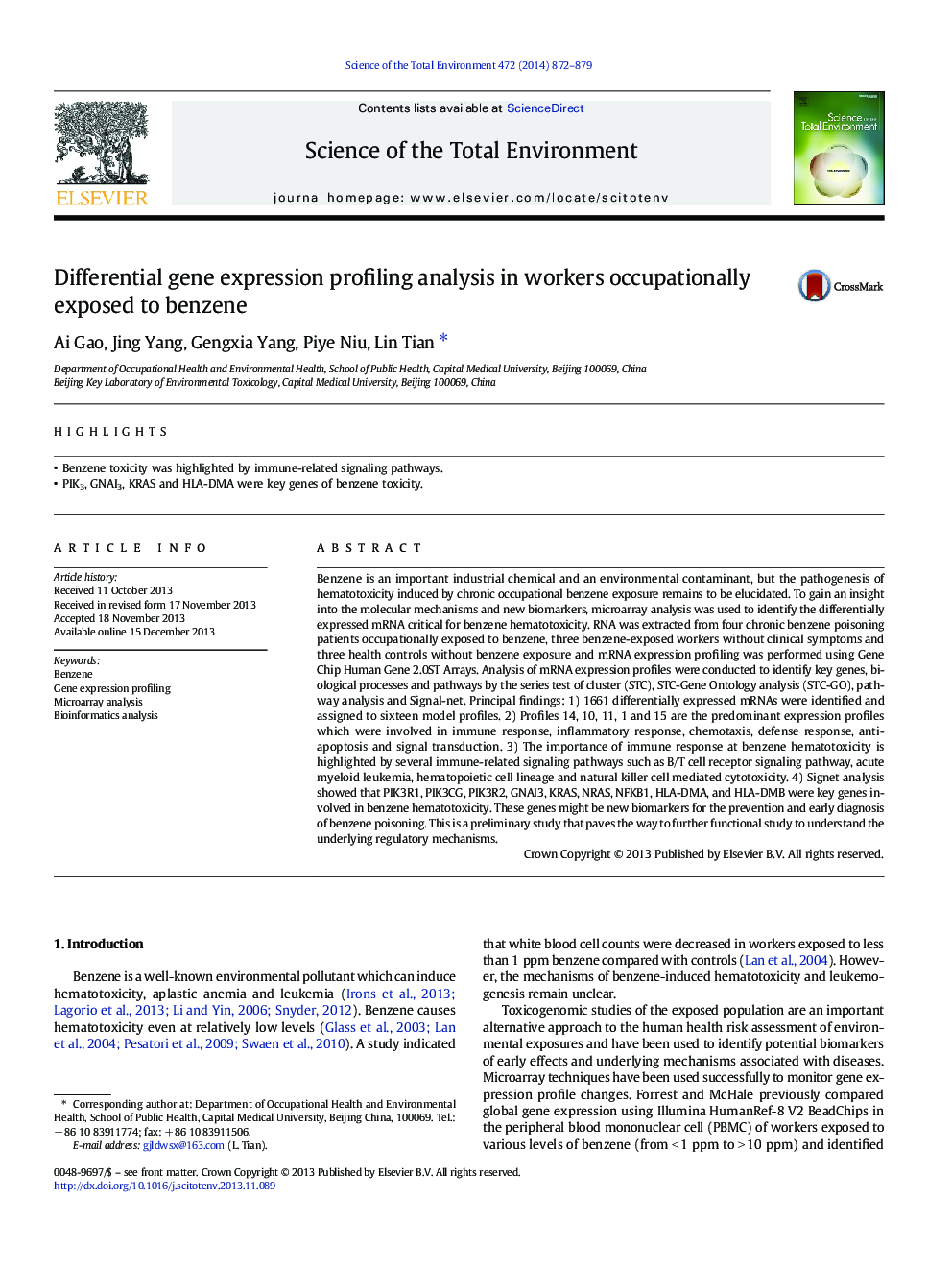| Article ID | Journal | Published Year | Pages | File Type |
|---|---|---|---|---|
| 6331285 | Science of The Total Environment | 2014 | 8 Pages |
â¢Benzene toxicity was highlighted by immune-related signaling pathways.â¢PIK3, GNAI3, KRAS and HLA-DMA were key genes of benzene toxicity.
Benzene is an important industrial chemical and an environmental contaminant, but the pathogenesis of hematotoxicity induced by chronic occupational benzene exposure remains to be elucidated. To gain an insight into the molecular mechanisms and new biomarkers, microarray analysis was used to identify the differentially expressed mRNA critical for benzene hematotoxicity. RNA was extracted from four chronic benzene poisoning patients occupationally exposed to benzene, three benzene-exposed workers without clinical symptoms and three health controls without benzene exposure and mRNA expression profiling was performed using Gene Chip Human Gene 2.0ST Arrays. Analysis of mRNA expression profiles were conducted to identify key genes, biological processes and pathways by the series test of cluster (STC), STC-Gene Ontology analysis (STC-GO), pathway analysis and Signal-net. Principal findings: 1) 1661 differentially expressed mRNAs were identified and assigned to sixteen model profiles. 2) Profiles 14, 10, 11, 1 and 15 are the predominant expression profiles which were involved in immune response, inflammatory response, chemotaxis, defense response, anti-apoptosis and signal transduction. 3) The importance of immune response at benzene hematotoxicity is highlighted by several immune-related signaling pathways such as B/T cell receptor signaling pathway, acute myeloid leukemia, hematopoietic cell lineage and natural killer cell mediated cytotoxicity. 4) Signet analysis showed that PIK3R1, PIK3CG, PIK3R2, GNAI3, KRAS, NRAS, NFKB1, HLA-DMA, and HLA-DMB were key genes involved in benzene hematotoxicity. These genes might be new biomarkers for the prevention and early diagnosis of benzene poisoning. This is a preliminary study that paves the way to further functional study to understand the underlying regulatory mechanisms.
